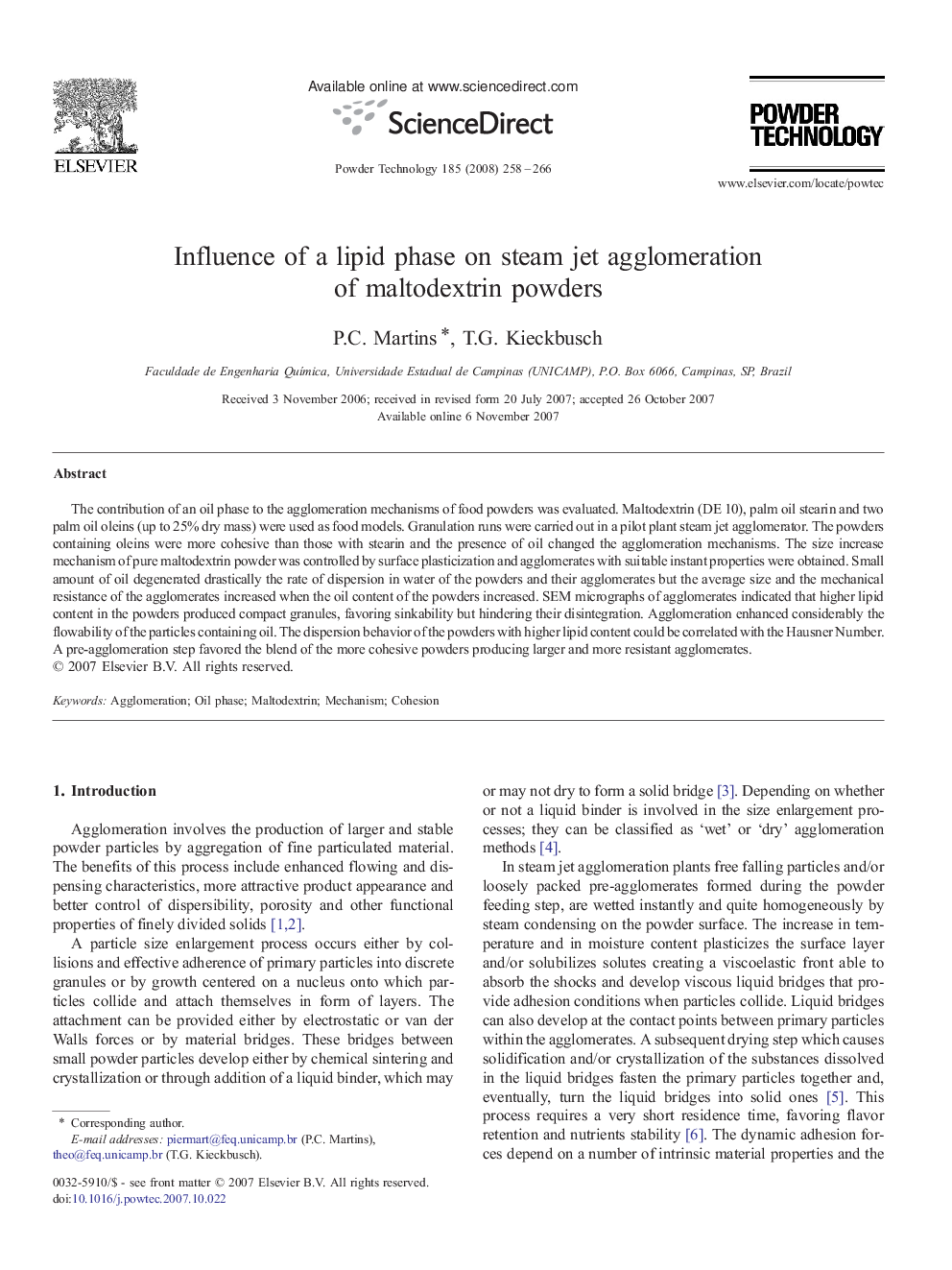| Article ID | Journal | Published Year | Pages | File Type |
|---|---|---|---|---|
| 238821 | Powder Technology | 2008 | 9 Pages |
The contribution of an oil phase to the agglomeration mechanisms of food powders was evaluated. Maltodextrin (DE 10), palm oil stearin and two palm oil oleins (up to 25% dry mass) were used as food models. Granulation runs were carried out in a pilot plant steam jet agglomerator. The powders containing oleins were more cohesive than those with stearin and the presence of oil changed the agglomeration mechanisms. The size increase mechanism of pure maltodextrin powder was controlled by surface plasticization and agglomerates with suitable instant properties were obtained. Small amount of oil degenerated drastically the rate of dispersion in water of the powders and their agglomerates but the average size and the mechanical resistance of the agglomerates increased when the oil content of the powders increased. SEM micrographs of agglomerates indicated that higher lipid content in the powders produced compact granules, favoring sinkability but hindering their disintegration. Agglomeration enhanced considerably the flowability of the particles containing oil. The dispersion behavior of the powders with higher lipid content could be correlated with the Hausner Number. A pre-agglomeration step favored the blend of the more cohesive powders producing larger and more resistant agglomerates.
Graphical abstractGranulation runs were carried out in a pilot plant steam jet agglomerator with maltodextrin powders with and without an oil phase in different proportions. The average size, wetting time and flowability of the agglomerates increased when the oil content of the powders increased. A pre-agglomeration step favored the blend of the more cohesive powders producing larger more resistant agglomerates.Figure optionsDownload full-size imageDownload as PowerPoint slide
